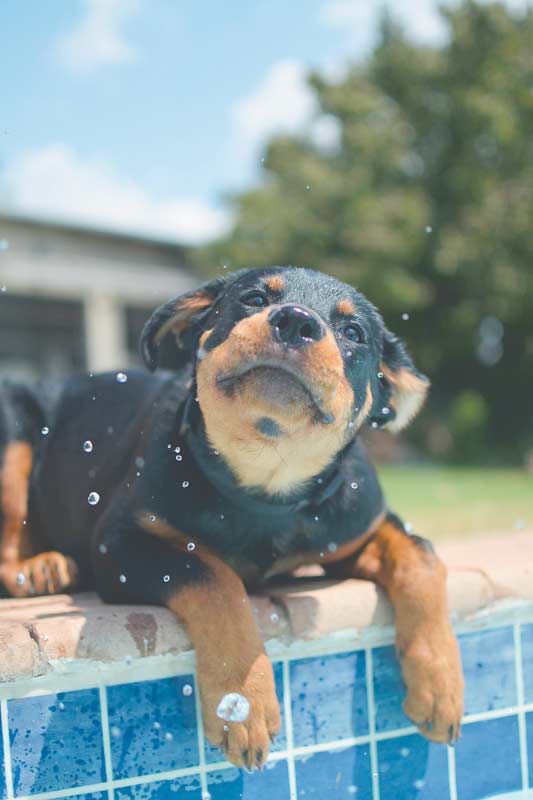
ENJOYING a summer day is great, but too much sun and heat can be dangerous or even deadly for animals. Pets, like people, are susceptible to the effects of extreme heat.
Ensure pets have access to shade and fresh, cool water at all hours of the day and never leave your dog tied up, as they could become tangled or unable to access shade or water. Planting grass and greenery will help keep your backyard cooler if you must keep pets outdoors.
Clamshell pools filled with water make a great doggie pool for pets to cool down in and having access to water may attract birdlife to your yard.
Exercise dogs during the morning or evening, and be aware of the ground temperature. Roads, footpaths, and even sand can burn your pet’s paw prints. Dogs with bald patches or thin coats may need sunscreen for added protection. Senior, overweight, thick furred or dogs with pushed-in noses (like pugs, boxers, or bulldogs) carry a greater risk of overheating.
Never leave your pet in a car – not even with the windows partway down, not even in the shade, not even for a quick errand. Animals cannot sweat like humans, so they pant to lower their body temperature and heatstroke can happen quickly.
If you suspect your pet has heatstroke, move them from the heat immediately and cool their ears, belly and paw pads with cool (but not freezing) water. Once they are stable, take them to a vet immediately as they may be suffering internal damage not visible to you.
Remember if it’s too hot for us to stay comfortable in the car, in the yard, or on a walk, it is even hotter for our furry companions.






